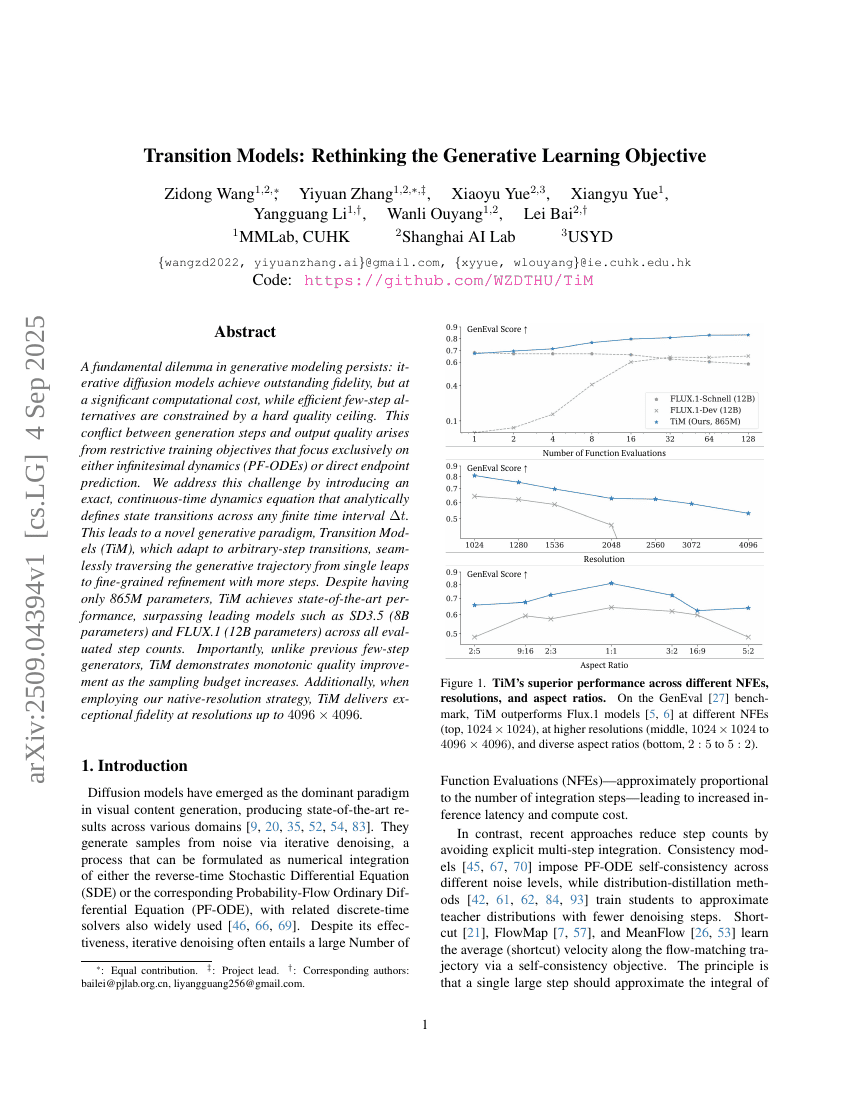Transition Models: Rethinking the Generative Learning Objective

A fundamental dilemma in generative modeling persists: iterative diffusionmodels achieve outstanding fidelity, but at a significant computational cost,while efficient few-step alternatives are constrained by a hard qualityceiling. This conflict between generation steps and output quality arises fromrestrictive training objectives that focus exclusively on either infinitesimaldynamics (PF-ODEs) or direct endpoint prediction. We address this challenge byintroducing an exact, continuous-time dynamics equation that analyticallydefines state transitions across any finite time interval. This leads to anovel generative paradigm, Transition Models (TiM), which adapt toarbitrary-step transitions, seamlessly traversing the generative trajectoryfrom single leaps to fine-grained refinement with more steps. Despite havingonly 865M parameters, TiM achieves state-of-the-art performance, surpassingleading models such as SD3.5 (8B parameters) and FLUX.1 (12B parameters) acrossall evaluated step counts. Importantly, unlike previous few-step generators,TiM demonstrates monotonic quality improvement as the sampling budgetincreases. Additionally, when employing our native-resolution strategy, TiMdelivers exceptional fidelity at resolutions up to 4096x4096.